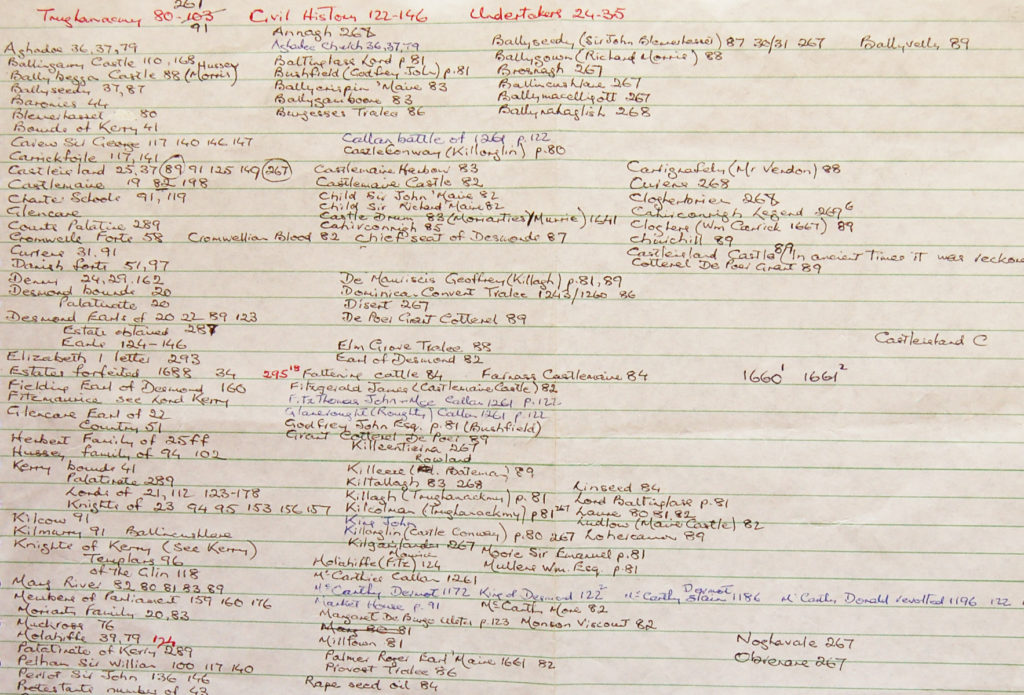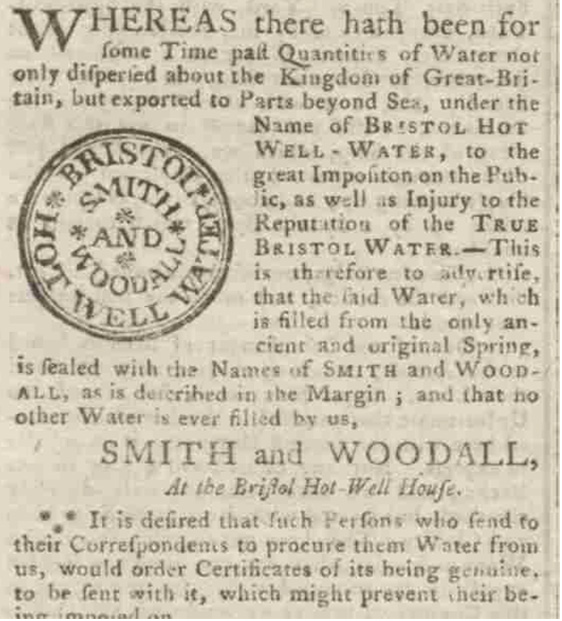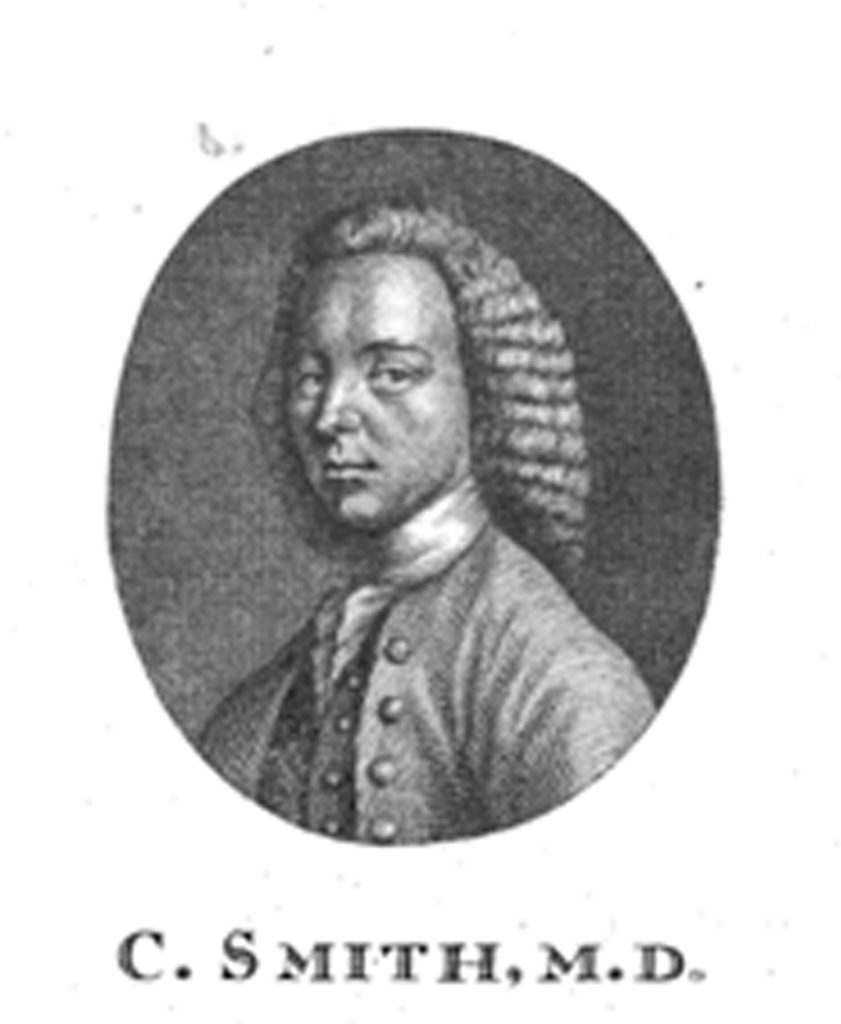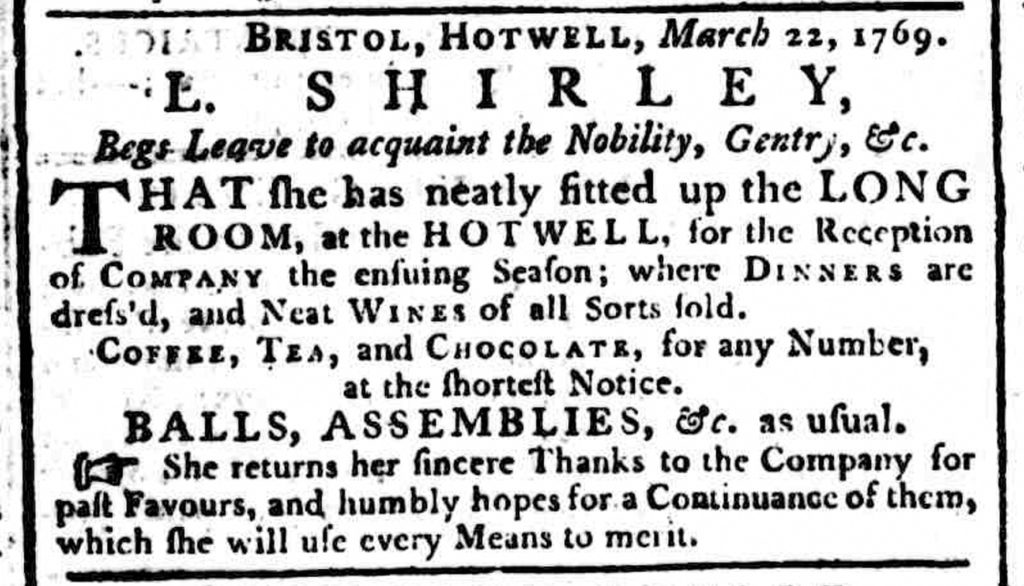Michael O’Donohoe had no intention of reinventing the wheel. Papers in the archive reveal how meticulous he was in his research method. Michael combed through standard reference sources, comparing one with another to present an informed result.
In many instances Michael created a useful index to allow quick and easy access to internal data. You could say a searchable document of an earlier kind.

The work of eighteenth century historian Dr Charles Smith (1715-1762) hardly escaped his notice. Smith is recognised as one of Ireland’s earliest topographers and writers of county histories. His history of Kerry – originally The Antient and Present State of the County of Kerry – was published in 1756 (there appears to have been an earlier, undated version).
Michael recognised the importance of this famous tract and appended a maze of references to it.
Claimed by Waterford and Cork
Dr Charles Smith was born circa 1715 in (as generally accepted) Co Waterford though Cork also lays claim: ‘Dr Charles Smith, the historian of Cork, was a native of Charleville, when he removed to Lismore, where he carried on the business of an apothecary’ (Irish Examiner, 24 June 1893).
The death of Dr Charles Smith was recorded in 1762: ‘Monday seven-night died at Bristol hot wells, Dr Charles Smith’ (Dublin Courier, 7 July 1762).

Hundreds of deaths were recorded at Hot Wells – lords, ladies, MPs. But it seems that Charles Smith had visited Hot Wells much earlier. In Antient & Present State of Cork he compared the waters of the River Blackwater to those of the Hot Springs in Bristol and discussed wells in Cork, including St Bartholomew Well (about two hundred and fifty years before the advent of Kerry Spring water, bottled water from Bristol could be had in Dublin 6s 6p for six bottles including price of bottle).
Smith bequeathed his manuscripts to a close friend who allowed new impressions of his valued histories to be printed in 1774.
History of Tipperary, Limerick and Clare
Shortly after this, Dr Smith’s Materials for the Natural and Civil History of the Counties of Tipperary, Limerick and Clare was advertised for private sale by James Vallance, ‘part of the library of the late Rev Mr Forbes and another Gentleman, deceased’:
The topography of the County of Tipperary is compleat, with an Index, and six elegant Designs, intended by him to be engraved and published with the Work (Saunders News Letter, 28 March 1774).
Smith was working on his Tipperary history in 1748:
Dr Charles Smith, the historian, of Kerry, Cork, and Waterford, who visited the County Tipperary in the year 1748, was impressed by the longevity of the people of Cashel. There he met Thomas Domville, a soldier who had accompanied Cromwell to Ireland in 1649. Domville, notwithstanding his great age, was in good health, and a few years before Dr Smith’s visit to Cashel had married a young woman, by whom he had several children (Munster Express, 21 March 1947).
The work must be presumed lost.
Test of Time
One century after publication, The Ancient and Present State of the County of Kerry retained its value. The Tralee Chronicle published a notice in its edition of 20 June 1856: ‘It is requested that the gentleman who has taken possession of our copy of Smith’s History of Kerry will return it with as little delay as possible’.
Nineteenth century scholar John O’Donovan claimed Smith wrote ‘absurd opinions as fact’ and described elements of Smith’s research as ‘nonsense’.

In his book, The Story of Kerry (1935) Kerry author Pádraig Pléimionn opined that the genealogies contained in Smith’s History and others like it were ‘of little or no historical interest and in the opinion of many, should be confined to their proper place – oblivion’.1
Michael’s estimation of earlier chroniclers was far less judgmental, as seen in his remark on a nineteenth century map held in his papers:
Information contained in this map is based
on Sir Richard Griffith’s Valuation … any
arguments in relation to same should be presented
to the aforementioned who died in 1878.
_________________
1 The Ancient and Present State of the County of Kerry was reprinted in 1969 and 1979. A biographical notice of Pléimionn contained in IE MOD/A15. Special thanks to Eileen Chamberlain for assistance in research of the above.



